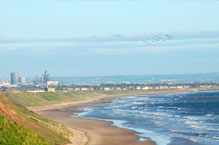Environmental Analysis
In this section

Monitoring is used to help demonstrate radioactive discharge compliance as required by environmental impact regulations.
UKHSA provides analytical services for a wide range of environmental monitoring activities. We carry out environmental radioactivity monitoring on behalf of regulators, local authorities, private industry and members of the public.
The European Community requires the measurement of background levels of radioactivity in all Member States, a requirement met by very sensitive analysis of samples. In addition to analysing these types of samples, UKHSA undertakes further studies on the data to provide assessment of the impact of radionuclides on public health.
Example 1
For many years UKHSA has provided commercial analytical support to the Scottish Environment Protection Agency (SEPA). This involves analysis of a large range of different sample types for over 50 different radionuclides. The data is published annually as part of the Radioactivity in Food and the Environment (RIFE) report.
This work involves a multi-agency approach, combining the monitoring data from a number of organisations. The aim is to assess the total amount of radiation the public is exposed to from nuclear sites around the UK.
Example 2
Radioecological studies are a particular strength of UKHSA laboratories. These can combine the expertise of individual teams working in a number of areas. Sampling, analysis, data interpretation and dispersal modelling combine to show the transfer of radionuclides along environmental pathways such as food chains and urban environments.
Studies can be tailored to meet your specific objectives and PHE will work with you every step of the way from planning to completion.
As an example the UKHSA undertook a study (in collaboration with other government agencies) into the effects of the transfer of radioactivity from seawater to the public through uptake in seaweed.
Click here to read the final report.